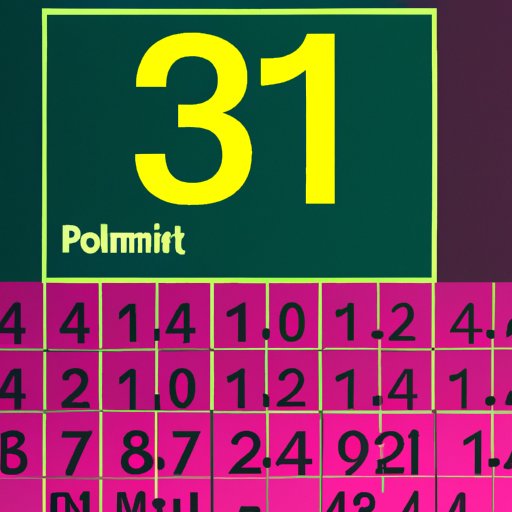
Introduction
The concept of atomic number lies at the heart of chemistry, and understanding it is crucial in determining the properties and behavior of every element. In this guide, we will explain what atomic number is, why it matters and how to find the atomic number for any element.
The Ultimate Guide to Understanding Atomic Number
Atomic number is a fundamental concept in chemistry, representing the total number of protons in an atom’s nucleus. It is denoted by the symbol ‘Z’ and is vital in determining the unique properties of each element.
The atomic number can be used to predict many properties of an element, including its electron configuration, chemical reactivity, and bonding behavior. Also, Atomic numbers determine the ordering of the elements on the periodic table.
Demystifying the Atomic Number
Unlike other properties of atoms, the atomic number can be determined directly from the periodic table. The atomic number is equal to the number of protons found in the nucleus of the atom. This number is unique to every element.
The periodic table organizes elements according to their atomic number. Every element is listed on the periodic table with its symbol, atomic number, and atomic mass. It can be read horizontally across each row, also known as a period, or vertically down each column, also known as a group, to determine elements’ properties.
Cracking the Code: How to Find the Atomic Number for Every Element
If you want to determine an element’s atomic number, you can do so by consulting the periodic table. Each element is given a unique number that corresponds to how many protons it has.
The number of protons in an element always determines the element’s identity, and it does not change- this value is unique and is not the same for any two elements. For instance, hydrogen has an atomic number of 1, which means it has only one proton, while gold, element 79, has seventy-nine protons.
The atomic number of an element is usually listed on the upper left corner of the chemical symbol inside the periodic table’s square. The atomic number also determines how elements are arranged on the periodic table
Mastering Chemistry: Simple Methods for Finding the Atomic Number for Beginners and Pros Alike
Finding and memorizing every element’s atomic number can be a daunting task. Fortunately, there are tricks and simple methods to make it easier to remember without much difficulty. One of the most proven methods is to group elements into families, such as alkali metals, transition metals, halogens, etc.
The periodic table lists the elements’ atomic numbers in ascending order horizontally across each row or period. The atomic number of every element increases from left to right, which means that those elements on the left-hand side of the periodic table have a lower atomic number compared to those on the right.
Also, considering each column or group in the periodic table tallies with a unique chemical property similarity, you can understand many questions related to valence electrons and other elemental properties once you establish the number of the elements in a single column.
Unlocking the Secrets of the Elements
Atomic number is one of the key concepts in chemistry, and understanding it is essential for predicting the behavior of elements and their compounds. By grasping this fundamental concept, you can make sense of the periodic table and the role of atomic number in determining each element’s unique properties.
As we have seen, the atomic number of an element is equal to the number of protons it has and is unique to every element. This value is crucial in understanding the fundamental properties of each element, including its electron configuration and chemical reactivity.
Finally, the atomic number determines an element’s position on the periodic table, which is crucial in studying trends in elemental behavior and predicting the behavior of unknown elements.
Conclusion
Understanding atomic number helps make sense of the properties and behavior of elements, not only in chemistry but also in other branches of science. By knowing the atomic number of an element, we can predict many of its fundamental properties that make up the world around us. By following the steps provided in this guide, you can find the atomic number of any element with ease.





